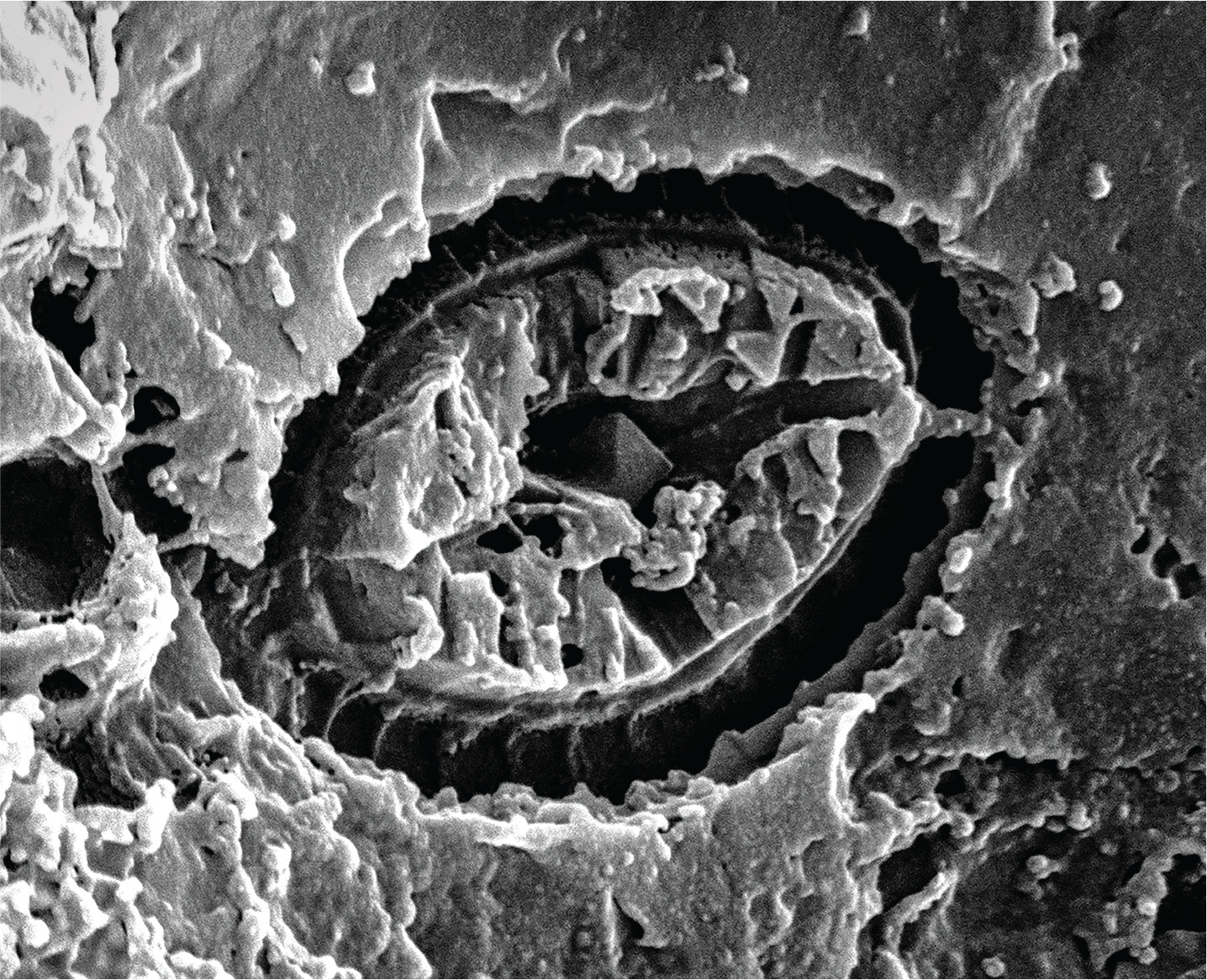Insights into Earth's Ancient Oceans: Unveiling Unprecedented Fossil Discoveries

A University of Leicester researcher has unearthed a novel kind of fossil that offers insight into marine life half a billion years ago. These miniature organisms, as described in a newly published study in the journal Proceedings of the Royal Society B, are akin to contemporary algae and may provide researchers with a deeper understanding of how climate changes influenced our oceans.
The studied fossils are microscopically small and resemble clustered, spiny spheres. When Dr Tom Harvey, of the University of Leicester's School of Geography, Geology, and the Environment, initially encountered them, he was baffled. He conjectured they could be animal eggs or an entirely new organism. He noted that no similar living or extinct organisms exist.
Additional specimens led Dr Harvey to identify similarities with current green algae floating in the plankton of ponds and lakes. He said, "The fossils share the same kind of colonial structure as the modern algae, comprised of interconnected cells, which accounts for their tidy, geometric arrangements. Interestingly, the fossil examples dwelled in the sea, providing a unique peek at early marine plankton."
The fossils' significance stems from their incredible age. They existed during the initial evolution of animals, at the time of the Cambrian explosion of life, likely not a random coincidence. Phytoplankton currently provides a primary food source for nearly all marine life. However, the modern phytoplankton groups have evolved more recently, and their Cambrian ocean equivalents remain unidentified.
Dr Harvey elaborates that based on current plankton observations, algae form colonies when under threat from predators, serving as a defense mechanism. Thus, the discovery of Cambrian Period colonial algae suggests that early animals began evolving to feed on plankton, commencing a predator-prey dynamic that persists to this day.
Considering the vital role plankton plays in supporting ocean life and assisting in the construction of ancient climate models, these tiny fossils significantly contribute to recounting the Earth's life history.
This novel discovery encourages a reassessment of other early microfossils. For a long time, scientists surmised that the spiny balls found separately were dormant cysts of single-celled organisms. According to Dr Harvey, the new fossils question this common belief, suggesting that many of these microfossils may have existed as colonies in the plankton. Therefore, there's a need to revisit existing collections and conduct further research to establish their actual prevalence.
The referenced study is titled "Colonial green algae in the Cambrian plankton" by Thomas H. P. Harvey, published on 24 October 2023 in the Proceedings of the Royal Society B.




